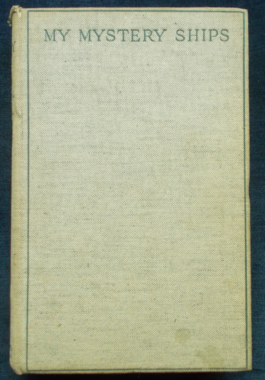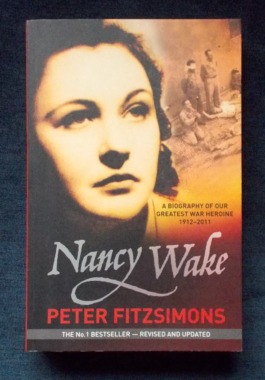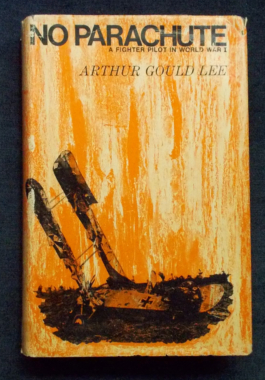- Sorry, this product is unavailable.
-

 Frank Dell's experience as a Second World War pilot with the Royal Air Force's Light Night Striking Force took an even more dramatic turn when his Mosquito was shot down over Germany on the night of 14/15 October 1944. Frank recounts his escape from the disintegrating aircraft, his descent by parachute, and how, battered and bruised, he finds himself in a field adjacent to a German V2 rocket launch pad. Determined to avoid capture Frank crosses Nazi Germany and finds refuge in Holland with a Dutch Resistance group. A schoolboy when the conflict broke out, Frank Dell's extraordinary war takes him from a Home Guard unit defending the English coast against enemy invasion in 1940, to a tragic incident leading to the execution of Dutch civilians only weeks before the end of the hostilities. Frank's observant eye gives insight into what it is like to train and fly operationally with RAF Bomber Command, followed by the even greater challenges he confronts as he narrowly escapes capture while on the run from the Germans.
Frank Dell's experience as a Second World War pilot with the Royal Air Force's Light Night Striking Force took an even more dramatic turn when his Mosquito was shot down over Germany on the night of 14/15 October 1944. Frank recounts his escape from the disintegrating aircraft, his descent by parachute, and how, battered and bruised, he finds himself in a field adjacent to a German V2 rocket launch pad. Determined to avoid capture Frank crosses Nazi Germany and finds refuge in Holland with a Dutch Resistance group. A schoolboy when the conflict broke out, Frank Dell's extraordinary war takes him from a Home Guard unit defending the English coast against enemy invasion in 1940, to a tragic incident leading to the execution of Dutch civilians only weeks before the end of the hostilities. Frank's observant eye gives insight into what it is like to train and fly operationally with RAF Bomber Command, followed by the even greater challenges he confronts as he narrowly escapes capture while on the run from the Germans. -

Munda Trail: Eric Hammel
$10.00The Solomon Island archipelago stretches in a roughly east-west direction from New Guinea to San Cristobal. For the Imperial Japanese forces in 1942, it was a natural highway into the South Pacific. When checked at Guadalcanal, these forces realized they had moved east too quickly, and that their defeat was caused in part by inadequate air bases between the front and their head-quarters at Rabaul, more than six hundred miles away. As the last Japanese battalions were wrecking themselves against the Marine defensive perimeter on Guadalcanal, the decision was made to build the Munda airfield on New Georgia, right in the middle of the Solomons chain. This is the dramatic, harrowing story of green American soldiers encountering for the first time impenetrable swamps, solid rain forests, invisible coconut-log pillboxes, tenacious snipers tied into trees, torren-tial tropical rains, counterattack by enemy aircraft and naval guns, and the logistical nightmare of living and moving in endless mud. -
 World War I saw a significant and tragic change to the prosecution of war. Allied passenger and merchant ships were blatantly attacked by the enemy, resulting in dreadful civilian losses. The mystery ships were then created - they were disguised as peaceful merchant ships, but which were equipped with guns hidden until a few seconds before opening fire on enemy submarines. They cruised on the trade routes, hoping to encounter enemy submarines and attract them to attack, and when the submarine came to the surface, bombard her with heavy armament. The guns had to be accurate, necessitating rigid drill and discipline - one officer or man making an error would give the show away and risk the ship and crew. This book, first published in 1928, is the first to tell the real story of life on board and the stories of attacks on and by submarines as well as describing the life on board - the discomforts, difficulties and dangers of this method of fighting back. There was also an explanation of the attraction this form of service has for men who were independent and courageous with a strict sense of moral duty. The crew were constantly on alert: one false step could lead to the ship being torpedoed, with those left to try and save themselves or being taken prisoner; discipline and readiness for immediate action were strict from the moment of leaving harbour until safe within the harbour on return. Campbell served on the mystery ships from 2015 to 2017, beginning as a Lieutenant-Commander R.N., and ending that part of his naval career as a Captain R.N. with a V.C. and three D.S.O.s. A little-known and over-looked part of war history. With illustrations by Lieutenant J.E. Broome, R.N.
World War I saw a significant and tragic change to the prosecution of war. Allied passenger and merchant ships were blatantly attacked by the enemy, resulting in dreadful civilian losses. The mystery ships were then created - they were disguised as peaceful merchant ships, but which were equipped with guns hidden until a few seconds before opening fire on enemy submarines. They cruised on the trade routes, hoping to encounter enemy submarines and attract them to attack, and when the submarine came to the surface, bombard her with heavy armament. The guns had to be accurate, necessitating rigid drill and discipline - one officer or man making an error would give the show away and risk the ship and crew. This book, first published in 1928, is the first to tell the real story of life on board and the stories of attacks on and by submarines as well as describing the life on board - the discomforts, difficulties and dangers of this method of fighting back. There was also an explanation of the attraction this form of service has for men who were independent and courageous with a strict sense of moral duty. The crew were constantly on alert: one false step could lead to the ship being torpedoed, with those left to try and save themselves or being taken prisoner; discipline and readiness for immediate action were strict from the moment of leaving harbour until safe within the harbour on return. Campbell served on the mystery ships from 2015 to 2017, beginning as a Lieutenant-Commander R.N., and ending that part of his naval career as a Captain R.N. with a V.C. and three D.S.O.s. A little-known and over-looked part of war history. With illustrations by Lieutenant J.E. Broome, R.N. -

Nancy Wake: Peter Fitzsimons
$15.00In the early 1930s, Nancy Wake was a young woman enjoying a bohemian life in Paris. By the end of the Second World War, she was the Gestapo's most wanted person. As a naïve, young journalist, Nancy witnessed a horrific scene of Nazi violence in a Viennese street. From that moment, she declared that she would do everything in her power to rid Europe of the Nazis. What began as a courier job here and there became a highly successful escape network for Allied soldiers, perfectly camouflaged by Nancy's high-society life in Marseille. Her network was soon so successful - and so notorious - that she was forced to flee France to escape the Gestapo, who had dubbed her "the white mouse" for her knack of slipping through its traps. But Nancy was a passionate enemy of the Nazis and refused to stay away. Supplying weapons and training members of a powerful underground fighting force, organising Allied parachute drops, cycling four hundred kilometres across a mountain range to find a new transmitting radio - nothing seemed too difficult in her fight against the Nazis.Illustrated with black and white photographs. -
 New Zealand's most famous RAF pilot saw action from the Munich Crisis to the invasion of France in 1944. Deere experienced the drama of the early days of the Battle of Britain while serving with Spitfire squadrons based at Hornchurch and Manston, and his compelling story tells of the successes and frustrations of those critical weeks. Deere's nine lives are the accounts of his fantastic luck in escaping from seemingly impossible situations. During the Battle of Britain he parachuted from stricken aircraft on three occasions and once was blown up by a bomb while taking off from Hornchurch during an attack on the airfield. In March 1943 Deere was appointed Wing Commander of the famous Biggin Hill Wing and by the end of the war, his distinguished 'score' was destroyed - twenty-two; 'probables' - ten and damaged - eighteen. Illustrated with black and white photographs.
New Zealand's most famous RAF pilot saw action from the Munich Crisis to the invasion of France in 1944. Deere experienced the drama of the early days of the Battle of Britain while serving with Spitfire squadrons based at Hornchurch and Manston, and his compelling story tells of the successes and frustrations of those critical weeks. Deere's nine lives are the accounts of his fantastic luck in escaping from seemingly impossible situations. During the Battle of Britain he parachuted from stricken aircraft on three occasions and once was blown up by a bomb while taking off from Hornchurch during an attack on the airfield. In March 1943 Deere was appointed Wing Commander of the famous Biggin Hill Wing and by the end of the war, his distinguished 'score' was destroyed - twenty-two; 'probables' - ten and damaged - eighteen. Illustrated with black and white photographs. -
 Arthur Gould Lee, who retired as an RAF air vice marshal, had the privilege of recording his feelings and actions during World War I in his letters home and what's more, his letters survived. A courageous 22-year-old, devoted to duty and well aware of the hazards he faced on the Western Front, Lee was more mature than most of his colleagues, in part by virtue of being married and in part because he had had the good fortune to have crashed during training, allowing him to log more hours of flight training than the average replacement pilot. He didn’t like the fact that the Germans had superior aircraft, and noted the qualitative differences in opposing Albatross D.Is, D.IIs and D.IIIs, the latter dubbed the “V-strutter” and carrying two machine guns to the single one carried by the Sopwith Pup. He writes about flying through a shell-laden sky, vulnerable to bullets from above and below. He never forgot the RFC's needless sacrifices and examines the failure of the Army High Command to provide efficient planes until mid-1917 and parachutes throughout the entire war. With black and white photos.
Arthur Gould Lee, who retired as an RAF air vice marshal, had the privilege of recording his feelings and actions during World War I in his letters home and what's more, his letters survived. A courageous 22-year-old, devoted to duty and well aware of the hazards he faced on the Western Front, Lee was more mature than most of his colleagues, in part by virtue of being married and in part because he had had the good fortune to have crashed during training, allowing him to log more hours of flight training than the average replacement pilot. He didn’t like the fact that the Germans had superior aircraft, and noted the qualitative differences in opposing Albatross D.Is, D.IIs and D.IIIs, the latter dubbed the “V-strutter” and carrying two machine guns to the single one carried by the Sopwith Pup. He writes about flying through a shell-laden sky, vulnerable to bullets from above and below. He never forgot the RFC's needless sacrifices and examines the failure of the Army High Command to provide efficient planes until mid-1917 and parachutes throughout the entire war. With black and white photos. -
 December, 1977: an urgent messaged was flashed from NORAD that a Soviet satellite had begun to malfunction by flipping out of its orbit - and was going to crash into the earth's surface. What followed was a real-life science fiction nightmare as scientists and politicians from America, Canada and the Soviet Union became embroiled in a terrifying tangle of intrigue and guessing games. Now the full story of this nightmare is told.
December, 1977: an urgent messaged was flashed from NORAD that a Soviet satellite had begun to malfunction by flipping out of its orbit - and was going to crash into the earth's surface. What followed was a real-life science fiction nightmare as scientists and politicians from America, Canada and the Soviet Union became embroiled in a terrifying tangle of intrigue and guessing games. Now the full story of this nightmare is told. -
 The in-depth inside story of the victory in Africa and Europe by Montgomery's Chief-of-Staff. This is not just a re-telling of the battles and campaigns de Guingand fought with Montgomery, the Eighth Army and the 21st Army Group; it is also an insight into what it takes to get armies equipped and in place to achieve those victories as well as an evaluation of some of the personalities of the leadership of the Western Allies through defeat onward to victory.
The in-depth inside story of the victory in Africa and Europe by Montgomery's Chief-of-Staff. This is not just a re-telling of the battles and campaigns de Guingand fought with Montgomery, the Eighth Army and the 21st Army Group; it is also an insight into what it takes to get armies equipped and in place to achieve those victories as well as an evaluation of some of the personalities of the leadership of the Western Allies through defeat onward to victory.




